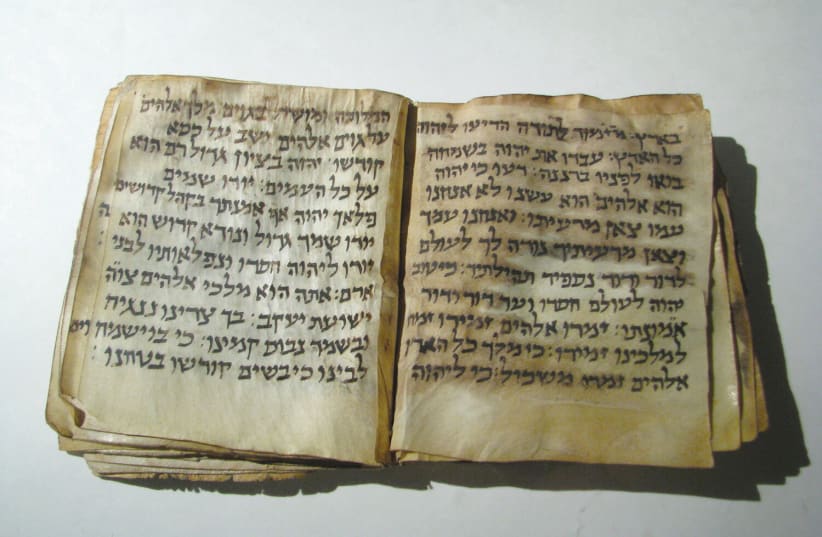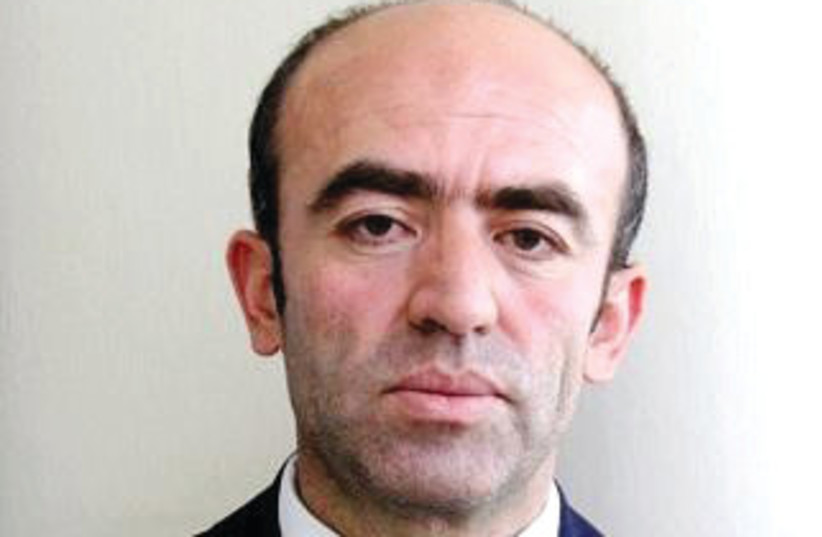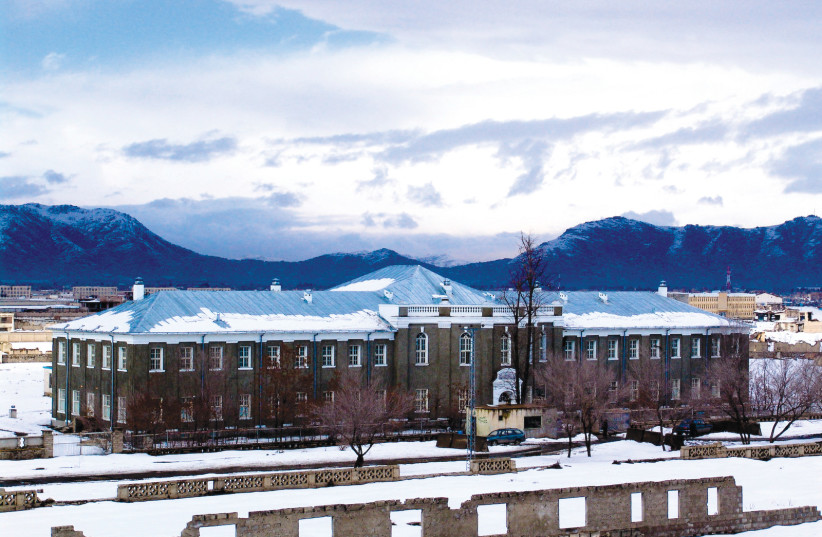Abdul Manan Shiway e-Sharq arrived safely in Munich on February 17, seven harrowing months after Taliban jihadis seized power in Kabul. From Germany, the former deputy minister for information and publications in the Information and Culture Ministry in Afghanistan is campaigning to safeguard his country’s multicultural heritage – and repatriate looted antiquities.
Foremost on his list of missing cultural artifacts are:
- The priceless Bactrian gold housed in the Arg presidential place in Kabul, and not been seen since the Taliban established the Islamic Emirate of Afghanistan in September 2021
- An invaluable medieval Hebrew-language siddur that disappeared from Kabul’s National Museum some time after 1998 and is now in the Museum of the Bible in Washington
- Some 4,500 relics discovered last year by Chinese miners in Logar province at Mes Aynak, home to a fifth-century complex of Buddhist monasteries and temples but also one of the world’s largest copper deposits.
Given the specter of starvation haunting Afghanistan – Human Rights Watch reported in November that the country’s 34 provinces are facing widespread famine due to the economic and banking crisis – Sharq, 39, considers himself lucky. Having survived an assassination attempt in 2020 at the gates of Kabul University where he had organized a book fair, he, his wife, Farzana, daughters Farwadin and Otusa, and son, Kawa, are now living in a refugee hostel in the Bavarian capital, far from the chaos of his native Badakhshan in the northeastern part of the country near Tajikistan.
“We have permission to walk around [Munich],” he says in a telephone interview. “We feel safe.”
The Sharq family – the surname means “east” in Pashto, Persian and Arabic – are among the 271,805 Afghan refugees registered last year with Germany’s Federal Statistical Office. The exiled minister estimates the up-to-date number is 100,000 higher. Most live in Hamburg, Berlin and Munich, part of the diaspora of more than five million Afghanis who have fled their country since the start of the Soviet-Afghan War in 1979. Notwithstanding Afghanistan’s high birthrate, the population of the failed state of poppy growers, mercenaries and feudal warlords has shrunk to an estimated 32 million.
Sharq is beseeching the international community to save his country from ruination: “Please help the Afghani people. It is a crisis for the world. Having wasted billions of dollars, the United States has replaced the Taliban with the Taliban after 20 years. We are in poverty and darkness. The world should help us bring justice and freedom.”
The author of two Farsi-language books about politics, Sharq is currently completing a novel about life under the Taliban he penned during the months he was hiding in Jalalabad, and then waiting in Tehran for Germany to approve his request for asylum. He is hoping the royalties will support his family while he studies for his PhD in international relations. “Now we do not have a government in Afghanistan.”
Despite the Taliban takeover of Afghanistan last year, the country’s looted patrimony remains his obsession. Asked about the siddur, Sharq insists: “It belongs to the people of Afghanistan.”
He calls on Israel and the international community to help return the treasures to Afghanistan.
“They are related to the country’s culture. If something like the [Hebrew] book was in Afghanistan illegally, we would return it. The Bible Museum should return it. This book belongs to Afghanistan and should be returned to the National Museum. We want the United States to return it as soon as possible, whether there is a legitimate government or not.”
Asked about loaning the siddur to the Shrine of the Book in Jerusalem, Sharq responds: “We had been deciding a way to display the books as you said [in the Israel Museum], but then the government [of President Ashraf Ghani Ahmadzai] collapsed. He confirmed those negotiations were taking place through the aegis of the New York-based American Jewish Committee.”
Calling Afghanistan today the “worst situation,” he adds, “I am very worried these treasures are not safe.”
Today Sharq’s war-scarred country is entirely Muslim. The majority are adherents of the Sunni Hanafi school, while nearly one-third are followers of Imami or Ismaili Shia Islam. But mountainous landlocked Afghanistan once dominated the caravan routes linking Europe and East Asia, and as such has a rich multi-faith heritage dating back millennia.
To deny the history of his Central Asia homeland and its material culture is criminal, he says. “This is anti-Islam.”
The National Museum of Afghanistan was established in 1919 at the former Bagh-i-Bala royal palace overlooking Kabul. Following the outbreak of Afghanistan’s civil war in 1992, the institution was repeatedly shelled. It suffered heavy damage in a May 12, 1993, rocket strike. The combination of Taliban mortars and looters resulted in the loss of 70% of the 100,000 prehistoric, Hellenistic, Buddhist, Hindu, Zoroastrian, Islamic and Jewish objects once housed in its collection. Those pilfered artifacts flooded antiquities markets in London, Paris, New York, Jerusalem and elsewhere.
Among the treasures that the pro-Western regime of Ashraf Ghani – formerly an anthropology professor at Johns Hopkins University in Baltimore – was seeking to repatriate was a 1,200-year-old siddur, the world’s oldest Hebrew manuscript after the Dead Sea Scrolls. But then the Taliban toppled Ashraf Ghani’s government shortly after US troops were withdrawn.
Last April, in the first-ever on-the-record interview between an Afghani official and an Israeli journalist, Sharq argued that photos of the ancient siddur in Kabul’s National Museum dating from 1998 contradict the documents provided by the Museum of the Bible in Washington.
The museum says it bought the priceless siddur for $2.5 million in 2013 from antiquities dealers in the UK who provided provenance papers showing the manuscript had been in Britain since the 1950s. Though Sharq appraises the unique volume at $30 million for insurance purposes, it truly is priceless.
The prayer book may have belonged to the Radhanites, a little-known group of medieval merchants, some Jewish, who traded along the Silk Road linking Christian Europe, the Islamic world, China and India during the early Middle Ages. The Radhanites’ entrepôts and the local Jewish community were likely destroyed in 1219, when the Mongol Empire occupied Afghanistan as it spread from the steppes of Mongolia to Europe and China.
Responding to a query last year, the Museum of the Bibles’ chief curator, Jeffrey Kloha, said the museum would share the results of an investigation when completed. A year later, no report has been issued.
“As noted on the museum’s provenance research web page, museum staff continue to work with external scholars and experts to research this item’s historical and religious significance, as well the item’s history in (apparently) Afghanistan and later Israel and the United States,” Kloha says. “That research is progressing and nearing completion.”
The web page, www.museumofthebible.org/provenance, includes a note about the siddur, described as an Early Jewish Prayer Book:
“This item was acquired in good faith in 2013 after receiving provenance information dating back to the 1950s in the UK. The item was legally exported from the UK. It has been displayed in the US, Israel, and published widely among international news outlets since September 2014. Subsequently, a Museum of the Bible curator discovered published images of the book from 1998, in which the book appears to have been photographed in Afghanistan. Subsequent research has not yet determined the findspot or history of the item prior to 1998. Curators continue to advance this significant research project.
“Nevertheless, this siddur is an exceptional item of unique historical, cultural, and religious significance, and presents great educational potential. In addition to ongoing provenance research, a book project is underway with contributions from specialists in handwriting, manuscript production, Jewish history in Afghanistan, and Jewish liturgical practices. This book project will make the siddur available for research and enable additional contributions to this one-of-a-kind manuscript.”
The allegation that the museum’s rare Afghan Hebrew prayerbook is another ancient Near Eastern treasure that was smuggled out of its country of origin – perhaps with the collusion of museum staff sympathetic to the Taliban who don’t regard Judaica as part of mixed Sunni and Shi’ite Afghanistan’s cultural legacy – is the latest in a series of scandals about looted and forged antiquities that has rocked the Museum of the Bible since its opening in the American capital.
Hoping to restore a tarnished reputation, the museum shipped 8,000 clay tablets back to Baghdad in January 2021 that may have been taken from the Iraq Museum in 2003, when looters overran it during the American invasion that toppled Saddam Hussein. The vaguely documented collection was acquired from licensed antiquities dealers in Israel, the US and the UK, and includes clay impressions of seals and incantation bowls meant to ward off demons thousands of years ago.
In January 2021, the US Department of Homeland Security returned 5,500 papyri fragments and other pharaonic artifacts from the museum with “insufficient” provenance to Egypt’s Tourism and Antiquities Ministry, concluding Cairo’s efforts since 2016 to regain its antiquities. Equally embarrassing, the museum has acknowledged the Dead Sea Scroll fragments it acquired are forgeries.
Leon Hill, a member of the California Bar Association who was negotiating to represent Kabul in its dispute with the museum over ownership of the siddur before last year’s coup d’état, is dismissive of the curators’ explanation that they are novices in the museum business and the acquisition of artifacts.
“They can’t continue to say that,” said Hill. “They’re no longer new. They have a duty to know better. They have a duty to the history and heritage of the artifacts they purport to protect.”
He accuses the museum of “cultural imperialism. We hope that the Museum of the Bible will do the right thing in the right way quickly.”
Hill rejects the allegation he sought to lucratively exploit a poor country’s misfortune. “This is not our effort to cash in on this criminal act,” he said. “Any attempt to commodify it is almost offensive. And that’s what the Museum of the Bible has done.”
Asked his concern that if the fragile siddur were returned to Afghanistan it might share the same fate as the two monumental sixth-century statues of Buddha in the Bamyan Valley that were registered on UNESCO’s list of World Heritage Sites, which were dynamited in 2001 on orders from Taliban leader Mullah Mohammed Omar who declared them idols, Hill answers: “Custody doesn’t necessarily mean location. Being in possession of stolen documents is not a responsible way to curate these artifacts.”
He says one solution would be for the Afghan government to loan the siddur and other medieval Judaica from the National Museum to the Shrine of the Book and Israel Museum in Jerusalem, which house some of the Dead Sea Scrolls, the Aleppo Codex, and other ancient Hebrew manuscripts.
Hidden in the basement of the Kabul museum is an irregularly-shaped 70 cm tombstone inscribed “Zakkai ben David Yosef Salomo died on Iyar 7, 1502” (of the Seleucid era corresponding to April 14, 1190), notes Richard Steinberg, a Canadian-Israeli who worked as a logistics security contractor at numerous locations across Afghanistan and Iraq for 14 years. The grave marker was uncovered in an archaeological dig in Samagan province in the Hindu Kush Mountains in 1957. A reference to the tombstone was published in an academic journal in 1964, after which it vanished.
A trove of Judaica may be secreted away in two other locked warehouses in the basement of the Kabul Museum, Steinberg suggests. He learned of the Afghan Judaica from Jerusalem antiquities dealer Lenny Wolfe, who in the last decade was instrumental in acquiring the Afghan Geniza for the National Library of Israel, together with Prof. (Emeritus) Shaul Shaked from the faculty of Islamic and Middle Eastern Studies of The Hebrew University of Jerusalem.
In 2019, Steinberg and Wolfe were able to get Jason Russell, a former British SAS officer who spent several years as a security specialist in Afghanistan, to photograph the tombstone. Their efforts to get an export permit to loan the Judaica to the Israel Museum collapsed with the Taliban takeover. In the quid pro quo deal, the Hebrew University, under the auspices of Prof. Shaked, would have provided Afghanistan’s Culture Ministry with academic and archaeological experts to decipher ancient Islamic items, which the ministry had not been able to properly evaluate.
“It’s long been time for a little transparency from the Museum [of The Bible] as to whom they were dealing with in terms of buying these objects,” says Joe Zias, a retired anthropologist with the Israel Antiquities Authority. “The world of antiquities acquisition is a little like the GOP today, who knows who is responsible for the mess there in the US but put their personal careers before the profession that they were obligated to protect. In the words of Seneca, ‘academics should be lawyers for the masses.’ Many academics have failed to obey these words.” ■


